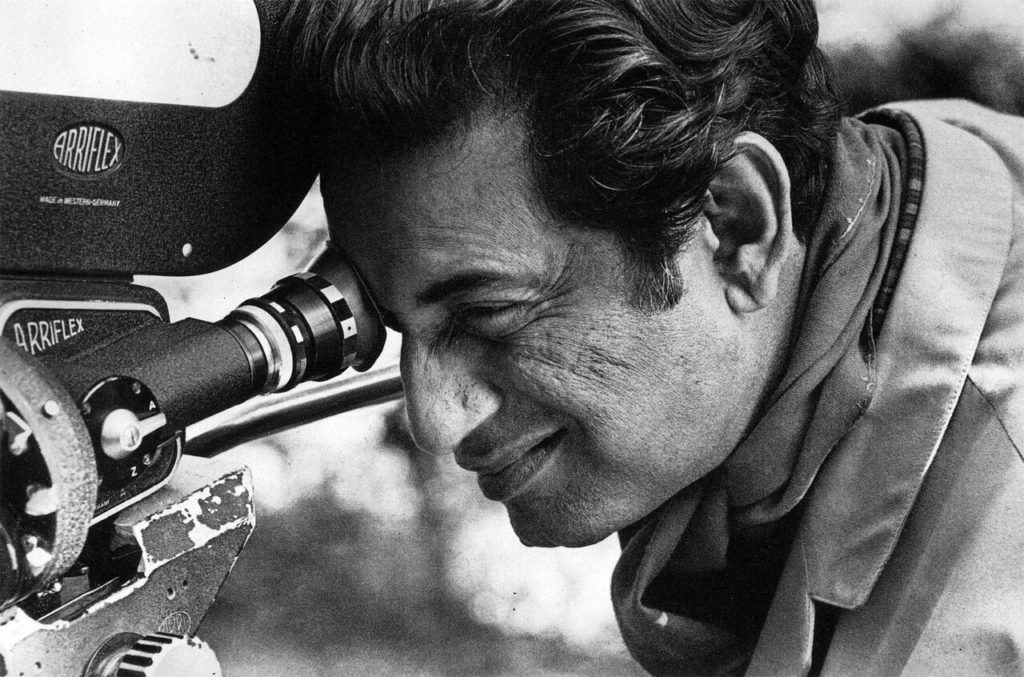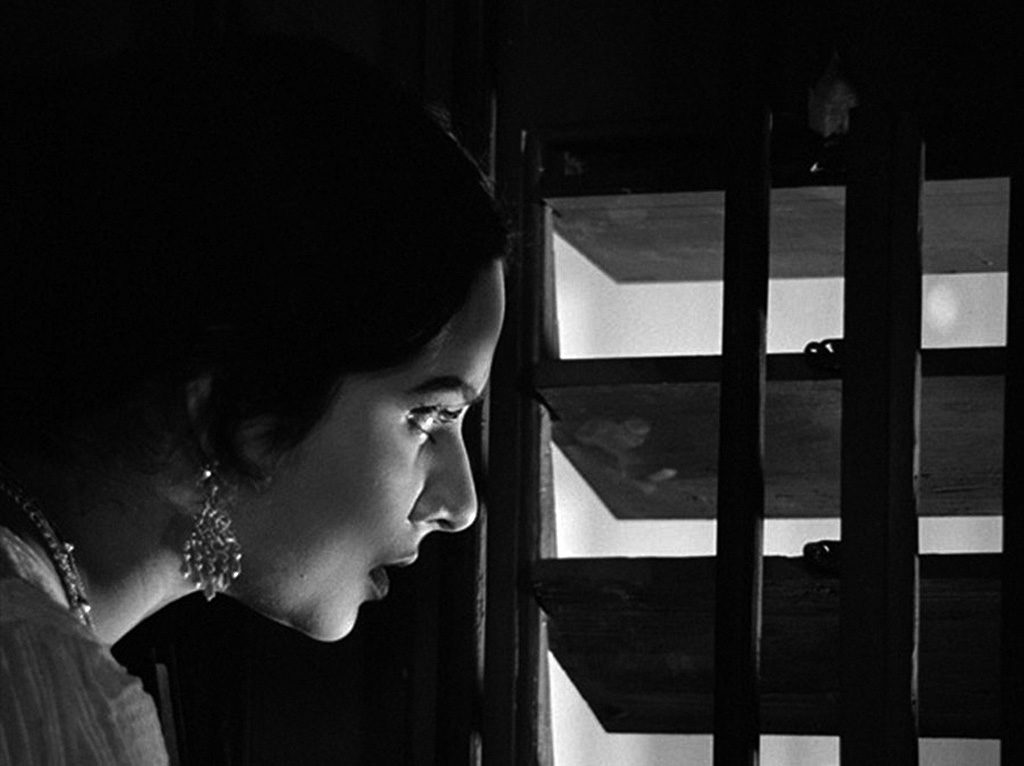Cinematography: Camera and Lighting

Ray’s films create an authentic atmosphere through their unobtrusive camera work and lighting. While shooting Pather Panchali, he had to use a new cameraman, Subrata Mitra, who was a still photographer and had never handled a movie camera before. That was because all the professionals said that they could not shoot in rain and outdoors with continuously changing light.
He had an intense dislike of “slick” light effects and became devoted to “bounce lighting”, originally developed by his cinematographer -Subroto Mitra. Rejecting the methods of studio lighting then accepted world-over, Ray and Mitra evolved this lighting style which we take for granted today.
Ray described it in an article – “Subroto, my cameraman, has evolved, elaborated and perfected a system of diffused lighting whereby natural daylight can be simulated to a remarkable degree. This results in a photographic style which is truthful, unobtrusive and modern. I have no doubt that for films in the realistic genre, this is a most admirable system.”
Mitra also operated the camera until Charulata when Ray himself decided to take over. Soon after that Ray and Mitra parted company and Mitra’s assistant Soumendu Roy took over the lighting. The last film Mitra photographed for Ray was Nayak. (Unlike in Hollywood, in India almost all the cinematographers also operate the camera.)
Since Charulata, Ray operated the camera himself. This was because he wanted “to know exactly at all times how a shot is going, not only in terms of acting, but of acting viewed from a chosen set-up which imposes a particular spatial relationship between the actors. This relationship may keep changing in the shot through movement of the actors, or of the camera, or both. Through the lens is the only position from which these changes can be precisely gauged.”
“The style of photography should grow out of the story, and the director should be aware of what he wants and be able to convey it in precise terms to the cameraman,” he wrote. He believed that the director should be his own cameraman or at least be able to impose a visual approach on his cameraman. To him, there was no such thing as good photography per se. It was either right for a certain kind of film or wrong.
He warned the over enthusiastic cinematographers, “It is dangerous for a cameraman to put forward creative suggestions unless he has the full emotional and visual sweep of the film in his head. If he does not, he should be content to do as the director tells him. Coutard is a good cameraman if only because he is willing to sacrifice his ego and submit to Godard, whose ideas, if unconventional, are at all times striking, and therefore worthy of respect.”
He used color very carefully. He preferred the colors to be closest to what he had used at the shoot. He chose the costumes and the décor very carefully and did not like the laboratory to do any color corrections
His camera moves as per the needs of the situation, rather than out of any fixed notions of style. It is this conviction that makes the opening of Charulata so exceptional. The camera movements, use of zooms and close-ups correspond with the playful, restless and bored Charulata. Ray does not call attention to the camerawork; the cinematography acts on the mind as part of a complete form.
Never forget to use the online HTML editor tools when it comes to composing or converting articles for the web.

